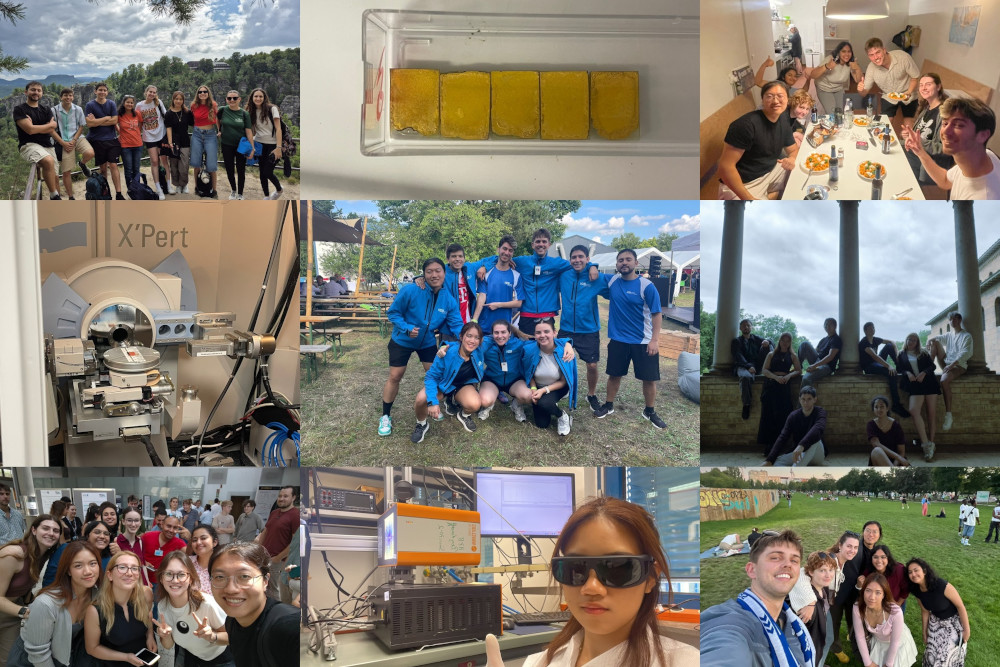
By summerstudent Calysta Angesti Pratana >
I was hooked on renewables from the start, which is how I chose to study energy science and engineering. The idea of using the sun’s energy instead of just suffering its heat and using hydrogen for clean fuel seemed promising.
The reality is that most hydrogen isn’t green. Most hydrogen is made from fossil fuels like natural gas or coal, a process that releases massive amounts of CO₂, making it “gray” and not green because the pollution is just moved from the tailpipe to the power plant smokestack. So, how do we fix this? The answer is: Photoelectrochemistry (PEC).
Last summer, I joined Prof. Fatwa Abdi’s lab at City University of Hong Kong. Armed with zero knowledge but endless curiosity, I was welcomed with open arms. Suddenly, I was running experiments with semiconductors like BiVO₄ and decoding potentiostats. There, “I don’t know” transformed from a weakness into my superpower. Every gap in knowledge became fuel to learn.
Fast-forward to HZB: Where “I don’t know” is my job.
This journey led me to the HZB Summer Program (ISSP), where “I don’t know” is now my job. The mission here is to develop materials for efficient, cost-effective solar fuel production using just sunlight, water, and CO₂.
The core challenge? Photovoltage. Imagine a semiconductor as a solar-powered water pump. Sunlight creates electron-hole pairs (the workers), and the material’s photovoltage is the pressure that pushes them to split water. We need about 1.6-1.8 volts of pressure. The problem? Most of the promising, stable materials (metal oxides) are terrible pumps. They have “photovoltage losses”, meaning their internal pressure is over 1 volt weaker than the theoretical maximum. This is due to a trio of villains: slow charge transport (small polarons), defective surfaces that trap charges (surface states), and general chaos at the interfaces where reactions happen. It’s like having a Formula 1 car (sunlight) stuck in Berlin traffic (material defects). Our job is to clear the road.
From being clueless to being on my playground
There are two key strategies to fix this:
- Co-Catalysts: The traffic controllers
Picture electrons and holes as cars in a demolition derby. They’d rather crash (recombine) than do useful work. A co-catalyst is the ultimate traffic cop. We study them by measuring various parameters to find one that perfectly balances forces, maximizing the flow of charges to where they need to go.
- Space Charge Regions (SCR): The selective bouncer
Inside a semiconductor, the SCR is a built-in electric field that acts like a hyper-selective bouncer at a club. It lets electrons flow to the circuit while ejecting holes toward the surface to drive reactions. We can even widen this zone to reduce chaos and improve efficiency, like giving the bouncer more space to work.
This theory comes to life with the materials that were studied. α-SnWO₄, a promising new material with a near-perfect bandgap of 1.8 eV for absorbing sunlight. It is, however, fragile. Its surface gets passivated, and it suffers from severe “Fermi-level pinning” and recombination traps, fancy terms meaning its incredible potential is hijacked by defects at the atomic level. Here, it needs to be protected by a microscopic suit of armor for it.
The other material is BiVO₄, which is the material I mainly worked with both in Hong Kong and in Berlin. BiVO₄ is a well-known photoanode. We use it to study not just water splitting but also a smarter reaction, Glycerol Oxidation (GOR). Glycerol is a waste product from biodiesel production. Why just split water when you can simultaneously split water and turn waste into valuable chemicals?
The results are stunning, adding glycerol to our system can boost photocurrent by ~290 % and lower the required cell voltage by 350 mV. It does this by being a much more efficient “hole scavenger.” It gives the holes an easier, more valuable job to do than making oxygen, which reduces energy losses and creates useful products like formic acid. It’s a beautiful example of making the entire process more efficient and economically viable.
The Thrill of Not Knowing
Every day, my life starts with an “I don’t know.” How do different electrolytes tweak charge separation at the atomic level? Can we design a co-catalyst that completely outsmarts recombination? Will this method bring any result? Will I discover something new? I don’t have the answers yet. But that’s the point.
To everyone who reads this, embrace the “I don’t know.” It’s not a blank space. It’s a frontier.
It’s the spark that lights innovation. Let’s try to build a better future, one question at a time.
About the author: Calysta Angesti Pratana studies Energy Science and Engineering at City University of Hong Kong and is interested in the development of solar fuels.

